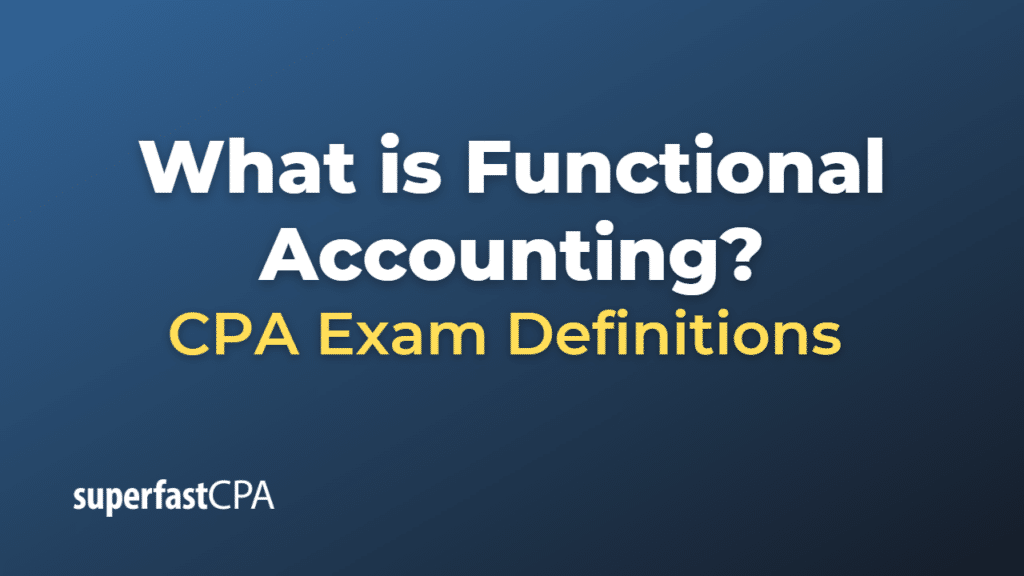Functional Accounting
Functional accounting is a method of accounting that categorizes costs, expenses, revenues, and capital expenditure according to their functions in an organization. It focuses on providing more specific insights into various business activities by grouping costs based on their business functions, such as production, administration, sales, and research & development.
For instance, in functional accounting, costs are not just classified as direct costs and indirect costs. Instead, they are further grouped into categories like production costs, selling and distribution costs, administrative costs, etc., depending on their relevance to specific business functions. This approach offers a more detailed understanding of how resources are used in the organization and where the major costs are incurred.
It’s worth noting that functional accounting does not replace the traditional methods of financial accounting, but rather supplements them by providing more specific information. This approach can be particularly useful for larger, more complex organizations where costs and revenues are associated with diverse activities.
By having a clearer picture of how costs and revenues are tied to specific business functions, management can better analyze and control costs, improve efficiency, and make more informed decisions. For instance, if a particular function is not generating enough revenue to cover its costs, management may decide to restructure or eliminate that function. On the other hand, if a function is particularly profitable, management might choose to invest more resources into it.
However, like any accounting method, functional accounting also has its limitations. It requires detailed record-keeping, which can be time-consuming and complex. Also, it may not be as useful for smaller businesses with less diverse activities, where traditional accounting methods may suffice.
Example of Functional Accounting
Let’s take a hypothetical example of a manufacturing company that produces a line of electric scooters:
Under a functional accounting approach, the company’s costs could be classified according to the following functions:
- Production costs: These are the costs associated with manufacturing the electric scooters. This could include the cost of raw materials, direct labor costs, factory overheads, and any other costs directly associated with the production process.
- Marketing and sales costs: These costs are related to promoting and selling the scooters. They could include advertising expenses, salaries of the sales team, commissions, the cost of maintaining a sales office, etc.
- Research and development costs: If the company is investing in research to develop new models or improve existing ones, these costs would fall under this category. This could include salaries of researchers, cost of research materials, prototype development costs, etc.
- Administrative costs: These are the costs associated with the general administration of the company. This could include salaries of administrative staff, office rent, office supplies, etc.
By separating costs into these functions, the company can analyze how much is being spent on each function and whether these costs are translating into proportionate benefits. For example, if the company is spending a lot on marketing and sales but the sales revenues are not increasing as expected, the company might decide to re-evaluate its marketing strategies. Similarly, if the production costs are increasing, the company might look for ways to make the production process more efficient.
This level of detail can provide valuable insights that can help the company’s management make more informed decisions. But it requires a well-designed accounting system and meticulous record-keeping to ensure accuracy and reliability of the data.













